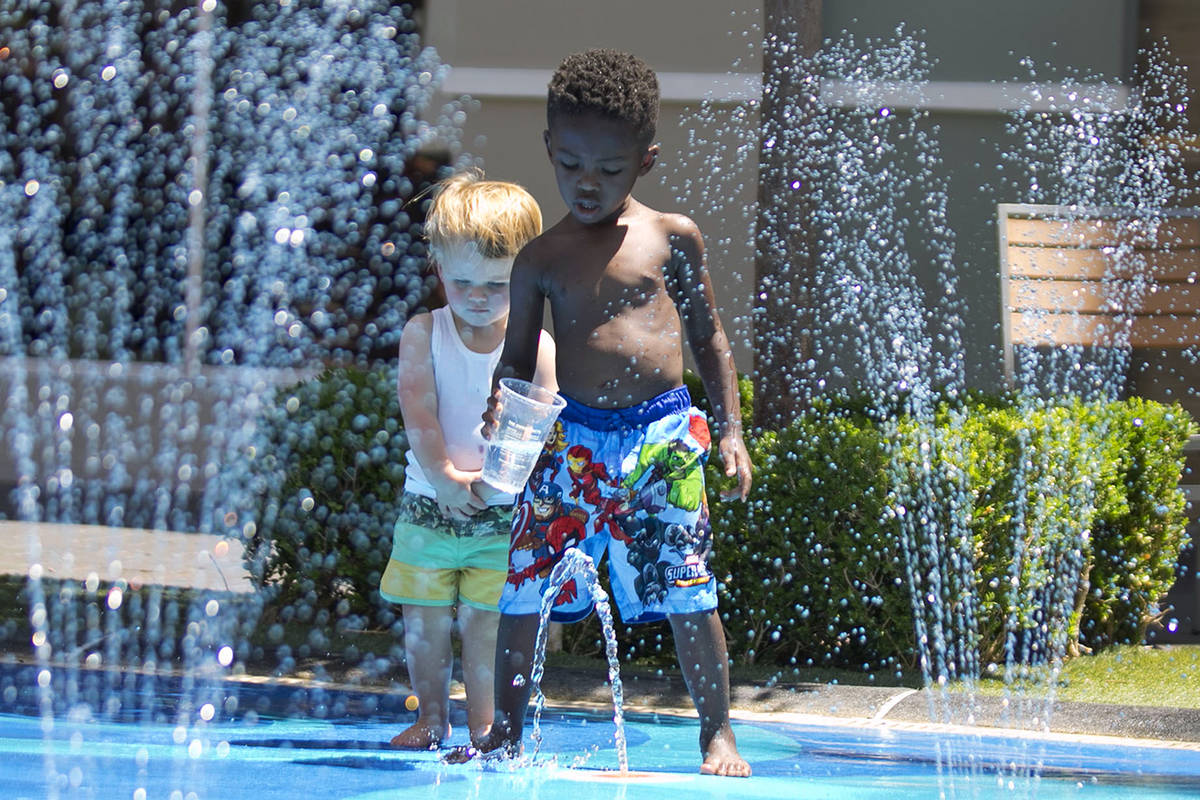Record for heat wave in Las Vegas Valley still stands 80 years later

A heat wave will drive Las Vegas Valley highs above 100 degrees next week, but eight decades ago valley residents had to sweat through nine straight days that reached 112 degrees or higher.
A heat wave that started on June 11, 1940, set both the record streak for highs of 112 or more and the eight-day streak for highs of 113 or more, according to National Weather Service data.
The record highs set June 12-19 of that year ranged from 112 degrees to 116.
But during June 1940, life continued as usual for the fewer than 8,500 people living in Las Vegas. The heat wave didn’t make the then-Evening Review-Journal front page, and was only mentioned in passing in the paper.
“The fact that there was a heat wave was just that. There was a heat wave,” said Mark Hall-Patton, administrator for the Clark County Museum system. “One of the things that we tend to forget is that heat waves just happen.”
The Evening Review-Journal didn’t report any deaths or hospitalizations directly due to the heat during that nine-day stretch, though it reported several children’s tonsillectomies and one story about a man who was jailed after he stole and sold an air conditioner for drinking money.
“It must not be so hot after all in Las Vegas, if a guy will sell a cooler for a bottle of fire water,” wrote an Evening Review-Journal reporter.
Tale of two councils
There was more to worry about at the time, Hall-Patton said. Top headlines that week told of France’s fall at the start of World War II, but local political drama was even more interesting to 1940 “Vegans.”
Earlier that year, the entire Las Vegas City Council had quit over a dispute with then-Mayor John Russell, who then appointed a second council of his own, Hall-Patton said. But the first council’s members technically still had their jobs, because without them there was no council to approve the resignations.
“And so in 1940 you have two city councils that are meeting concurrently in the same room and hate each other,” Hall-Patton said. “You’ve got a lot of turmoil going on at that point. So the fact that it’s really, really hot here is not going to be the big news story.”
Weather service meteorologist Todd Lericos said that because of the “urban heat island” effect, temperatures within the city of Las Vegas could have been even higher than those measured at the weather service’s Western Air Express Field monitoring station, now the site of Nellis Air Force Base.
“I can’t even imagine what it must have been like back then,” Lericos said.
Even in a town with fewer than 10,000 residents, urban development can cause the temperature to rise. However, the city was less humid in 1940, Hall-Patton noted, with fewer residents and even fewer lawns and landscaping around.
Coping with the heat
In fact, locals took pity on Northern Nevadans, who were experiencing their own record highs at the time. The Evening Review-Journal reported in a June 21, 1940, story on the statewide heat wave:
“Veteran Nevadans pointed out that the lack of humidity in the atmosphere in Las Vegas made the 110 temperature more bearable than lower readings in other parts of the state where the humidity is higher.”
“Bearable” may be subjective, as air conditioners were rare in the 1940s.
“In private homes, there were almost none. If you had anything, it would have been swamp coolers, but even that, almost none,” Hall-Patton said.
Instead, locals who weren’t able to flee to Mount Charleston for the summer months would have hung wet pieces of burlap to feel a few degrees cooler during the day and dragged out water-soaked beds to sleep under the open desert sky at night.
“That would cool off during the night as it evaporated and that would lower the temperature by 10 to 15 degrees,” he said. “You did that a couple of times a night and you could sleep.”
Most locals slogged on through the heat because they had no choice, Hall-Patton said. Extreme heat was, and still is, a fact of life in the desert.
“It’s amazing what you can live with if that’s what you have to,” he said.
Seven days into the heat wave, a columnist joked that Las Vegas needed centigrade thermometers, because they appear to read about 30 degrees cooler. More importantly, the city needed fewer “thermometer readers.”
“The people who suffer most from the heat are those who make a habit of reading the thermometer every five minutes or so,” he wrote.
Contact Max Michor at mmichor@reviewjournal.com or 702-383-0365. Follow @MaxMichor on Twitter.